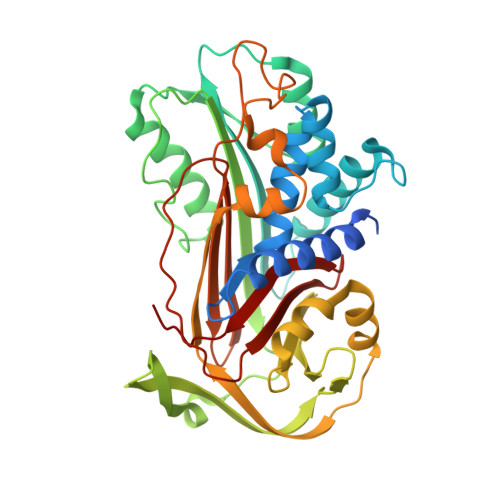Interactions causing the kinetic trap in serpin protein folding
Im, H., Woo, M.-S., Hwang, K.Y., Yu, M.-H.(2002) J Biol Chem 277: 46347-46354
- PubMed: 12244055
- DOI: https://doi.org/10.1074/jbc.M207682200
- Primary Citation of Related Structures:
1IZ2 - PubMed Abstract:
Conformational transition is fundamental to the mechanism of functional regulation in proteins, and serpins (serine protease inhibitors) can provide insight into this process. Serpins are metastable in their native forms, and they ordinarily undergo conformational transition to a stable state only when they form a tight complex with target proteases. The metastable native form is thus considered to be a kinetically trapped folding intermediate. We sought to understand the nature of the serpin kinetic trap as a step toward discovering how conformational transition is regulated. We found that mutations of the B/C beta-barrel of native alpha(1)-antitrypsin, a prototypical serpin, allowed conversion of the molecule into a more stable state. A 2.2 A resolution crystal structure of the stable form (PDB code, ) showed that the reactive site loop is inserted into an A beta-sheet, as in the latent plasminogen activator inhibitor-1. Mutational analyses suggest strongly that interactions not found in the final stable form cause the kinetic trap in serpin protein folding.
Organizational Affiliation:
National Creative Research Initiatives, Protein Strain Research Center, Korea Institute of Science and Technology, 39-1 Hawolgok-dong, Sungbuk-gu, Seoul 136-791, Korea.














